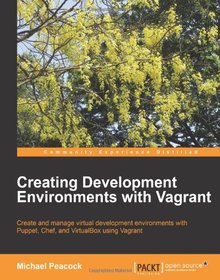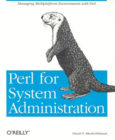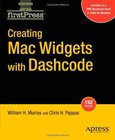Creating Development Environments with Vagrant

Book Details:
| Publisher: | Packt Publishing |
| Series: | Packt |
| Author: | Michael Peacock |
| Edition: | 1 |
| ISBN-10: | 1849519188 |
| ISBN-13: | 9781849519182 |
| Pages: | 118 |
| Published: | Aug 26 2013 |
| Posted: | Nov 19 2014 |
| Language: | English |
| Book format: | |
| Book size: | 3.22 MB |
Book Description:
Create and manage virtual development environments with Puppet, Chef, and VirtualBox using Vagrant Overview Provision virtual machines using Puppet and Chef Replicate multi-server environments locally Set up a virtual LAMP development server In Detail Vagrant is a tool for building complete development environments. With an easy-to-use workflow and focus on automation, Vagrant lowers development environment setup time, increases development/production parity, and makes the "it works on my machine" excuse a thing of the past. "Creating Development Environments with Vagrant" is a practical, hands-on guide that walks you through the functionality of Vagrant, Puppet, and Chef to create powerful and flexible virtual development environments. Create your own virtualization environments containing configurations for different projects so that you can simulate complicated environments that can be easily shared with colleagues to get your projects up and running quickly and effortlessly. "Creating Development Environments with Vagrant" starts with an introduction to virtualization and the concepts behind it, why its useful, and an overview of the architecture of Vagrant. We will learn to install Vagrant and get to know its prerequisites. Covering provisioning scripts with Puppet and Chef, learning to use them independently as well as with Vagrant to create a powerful combination. If you want to locally test your projects, juggle multiple projects running on different versions of software, easily share technology requirement changes with colleagues, and, most importantly, want to perform all these tasks efficiently, then this book is for you. "Creating Development Environments with Vagrant" will take you from a virtualization novice to running all of your projects across your team in robust, isolated virtual development environments. What you will learn from this book Create Vagrant projects Sync folders with your virtual development environment Integrate your own machine with the virtual machine Manage provisioning the server configuration with Puppet and Chef Set up multiple virtual machines for a single project Configure your virtual environment on your network Build your own base box for Vagrant Import and manage operating system images in Vagrant Get to grips with good practices for developing projects on your local machine Set up a simple LAMP server for a Vagrant project Approach This is a practical, hands-on guide that will help you set up and implement virtual development environments with Vagrant easily and effortlessly. Who this book is written for "Creating Development Environments with Vagrant" is for developers, programmers, and coders who want to maintain multiple projects within their own environment. It is also aimed at companies who are looking to deploy ready-to-go development solutions for new staff or even existing staff moving to new projects, and to enforce a consistent and portable virtual development environment that is easy to create and quick to set up.
Download Link:
Related Books:
Perl for System Administration
Managing multi-platform environments with Perl
Some people plan to become administrators. The rest of us are thrust into it: we are webmasters, hobbyists, or just the default "technical people" on staff who are expected to keep things running. After some stumbling around repeating the same steps over and over again (and occasionally paying the price when we forget one), we realize that we must automate these tasks, or suffer endless frustration. Thus enters Perl.The Perl programming language is ideal for writing quick yet powerful scripts that automate many administrative tasks. It's modular, it's powerful, and it's perfect for managing systems and services on many platforms.Perl for System Administration is designed for all levels of administrators--from hobbyists to card-carrying SAGE...
Building a Windows IT Infrastructure in the Cloud
Distributed Hosted Environments with AWS
Run your entire corporate IT infrastructure in a cloud environment that you control completely-and do it inexpensively and securely with help from this hands-on book. All you need to get started is basic IT experience. You'll learn how to use Amazon Web Services (AWS) to build a private Windows domain, complete with Active Directory, enterprise email, instant messaging, IP telephony, automated management, and other services. By the end of the book, you'll have a fully functioning IT infrastructure you can operate for less than $300 per month. Learn about Virtual Private Cloud (VPC) and other AWS tools you'll use Create a Windows domain and set up a DNS management system Install Active Directory and a Windows Primary Domain Controller Use Microsoft Ex...
Creating Mac Widgets with Dashcode
In over 100 pages, you will learn to create and use widgets using Dashcode. Widgets are simple, typically small applications for a specific purpose, such as a weather report, a calculator, a stock quote, and the like that reside on the Mac Dashboard. Building these before Dashcode was time consuming though not hard; but now, you can whip up a Widget fast. Creating Mac Widgets with Dashcode teaches you how. Updated for Mac OS X 10.5Leopard The fast and easy way to learn to build Widgets. Youll be building Widgets in an hour. Dashcode makes widget development simple. What youll learn Basics of Dashcode development Using templates Using JavaScript for more complex Widgets Including user input in your Widget Using scripting with your Widget Imp...
2007 - 2021 © eBooks-IT.org



